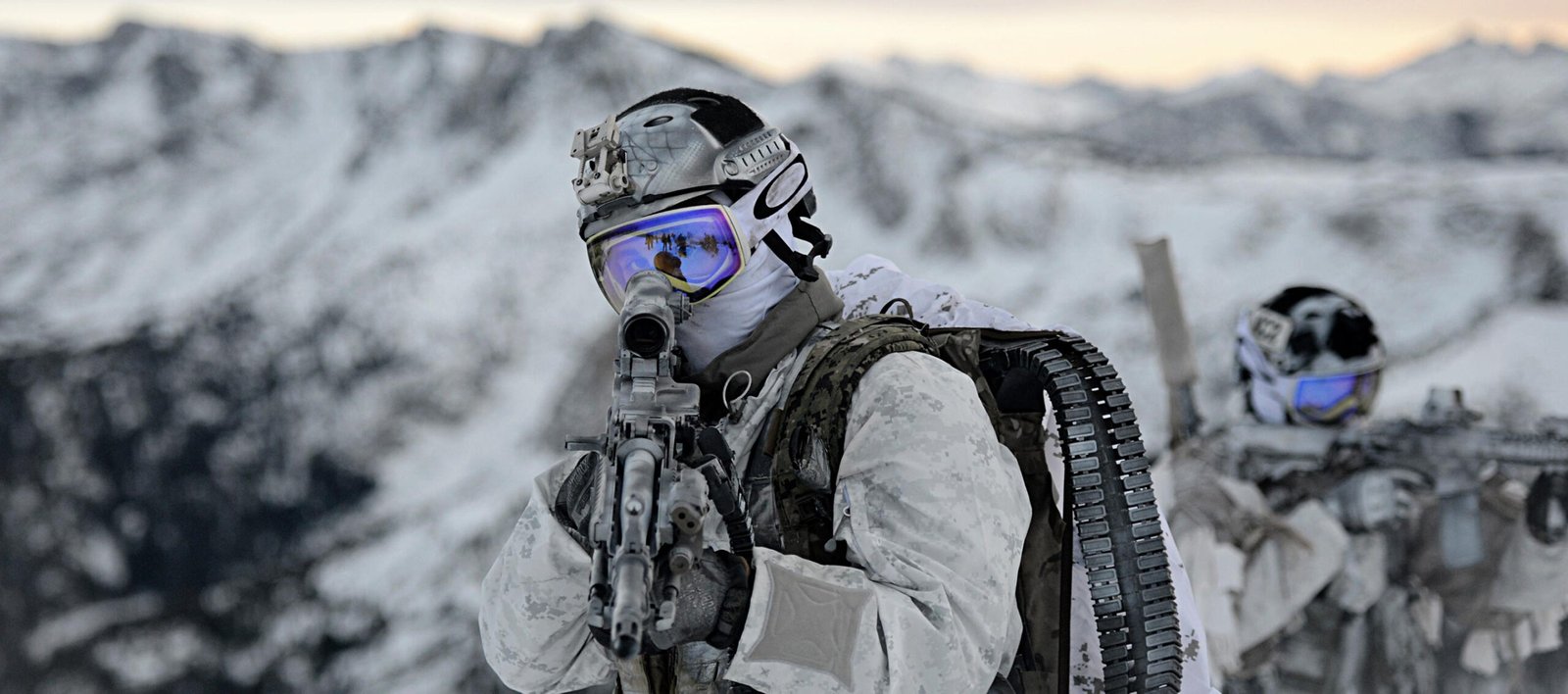Ranking the most powerful military forces in the world is a complex task given the number of parameters to consider and the weight each can have. In addition, what powerful means is different in different situations.
What does military strength really mean?
If we exclude the big powers that can cover all military scenarios, all others must compromise. What is more important: power projection capabilities or strong defensive infrastructure? Nuclear warheads or aircraft carriers? High-tech weapons or huge armies? Jet fighters or tanks? Which country has the upper end in terms of military power: small high-tech country A (say Netherlands) which can attack overseas country B but does not have the military size to conquer it, or even to defend itself under a sustained attack; or large low-tech country B (say Bangladesh) which thanks to its geographical and military size can resist multiple attacks from A but does not have the capability to project power, counter-attack and stop the aggression? We could as well replace small with medium, the Netherlands with the UK or France, and result wouldn’t change. The UK or France would send a few more ships and soldiers than the Netherlands, cause some more damage, until when they run out of weapons and money, then they’d sail back home. And we’re talking about Bangladesh. Even with those “big guys” nothing is straightforward. On paper the US should have easily won in Afghanistan and Vietnam, two third-world countries with a fraction of the US military strength and wealth, except they didn’t. Russia is a military giant compared to Ukraine and Putin thought taking over the country was going to be a little pre-dinner distraction; however, after two years (at the time of writing) Russia is still fighting to keep the small portion of Ukraine’s territory it managed to conquer at a huge human, economic and geopolitical cost.
Rankings can differ
Some rankings out there are purely by military budget, or purely by armed forces size, which completely exclude essential considerations such as what that budget can buy at local costs, ability to effectively deploy and use military assets away from the homeland, fighting experience and professionalism of its troupes, and much more. As an example, ranking by budget puts Saudi Arabia at 5th place in the world above many countries with far superior military strength. And a country with a very large population has proportionally very large armed forces, which says nothing on their quality and effectiveness in battle.
Other rankings go to the opposite end of assigning weighed scores to a multitude of parameters, with “mathematical” results which can be detached from actual strength. An example is the ranking produced by Global Firepower, which puts in the top ten spots Türkiye, Pakistan and Italy but not France, a case of alternative reality…
A more rational ranking
The factors that really contribute to a country’s military strength are military spending, manpower, technological capabilities, equipment, training, and strategic alliances. The following ranking is based on a combination of these factors.
United States – The established global superpower – With a military budget of USD 877 billion, the US military spend is higher than many of its competitors combined, and it shows, with an unparalleled technological advantage, power, and global reach. The United States possesses several strengths that contribute to its status as a global military powerhouse. Firstly, its technological superiority is unmatched, with advanced weapons systems, intelligence capabilities, and cyber warfare capabilities. Secondly, the U.S. has a vast network of military bases and alliances around the world, enabling rapid power projection and response to global threats. Thirdly, the professionalism and training of its personnel are exceptional, with highly skilled and dedicated service members across all branches. Lastly, its robust defence budget allows for continuous modernization and innovation, ensuring readiness and adaptability to evolving security challenges.
China – The emerging global power aiming for superpower status – China’s military budget has increased steadily over the years, to USD 292 billion, and it will keep growing in line with the country’s expanding geopolitical ambitions. China’s military strengths lie in several key areas. Its large and rapidly modernizing military, the People’s Liberation Army (PLA), boasts significant manpower and a growing arsenal of advanced weaponry, including advanced aircraft, naval vessels, and ballistic missiles. China’s emphasis on cyber warfare and technological innovation has resulted in the development of sophisticated cyber capabilities and cutting-edge military technology, such as hypersonic missiles and anti-satellite weapons. Its strategic focus on military modernization and expansion of its naval capabilities has strengthened its ability to project power and protect its maritime interests in the South China Sea and beyond.
Russia – The declining global power attempting to stay relevant – Russia’s military budget has increased to USD 86.4 billion, also because of the resources needed to support the war in Ukraine. Russia’s military strengths are multifaceted. It maintains a large and well-equipped military force, including a significant number of tanks, artillery pieces, and armoured vehicles, inherited from its Soviet-era military. It possesses the highest number of warheads of any country, which combined with intercontinental ballistic missiles and hypersonic missiles give Russia a formidable strategic deterrent capability, main reason why it will remain a global power for the foreseeable future. Its military modernization efforts have focused on developing sophisticated air and naval capabilities, including advanced fighter jets, submarines, and surface vessels, enhancing its ability to project power regionally and globally.
European Union – The potential global power on the making – This is an odd one because the EU is not a country. However, it has been integrating politically and economically for decades. With Russia’s aggression of Ukraine and the US pivoting towards the Indo-Pacific, the EU started seriously looking at defence too, accelerating cooperation and increasing resources. With a total military budget of USD 258 billion and the combined strength of France, Germany, Italy, Spain, the Netherlands, Poland and 20 other countries, the EU fully deserve to be in this list, and depending on how geopolitical events unfold it could go up in this ranking. With a GDP of USD 19 trillion compared to Russia’s 1.7 trillion, three times the population, and membership of NATO for most of its states, what the EU could build up if it really decided to prepare for war is of another order of magnitude compared to what Russia can do.
Regional powers with global reach and multiple basis overseas
France – While France’s military budget is “just” USD 53.6 billion, it punches well above its weight, equalling the UK in most parameters but besting it in terms of armed forces size, number of warheads and a policy of strategic autonomy while being part of NATO. France maintains an independent nuclear deterrent with its nuclear triad of submarines, aircraft, and land-based missiles, with the 4th largest nuclear warheads arsenal in the world after the US, Russia and China. It has specialised rapid reaction forces, including the Foreign Legion and airborne units, which are capable of deploying quickly to crisis areas. It has a strong defence industry and invests in technological innovation, particularly in areas such as aerospace, naval, and armoured warfare.
United Kingdom – The UK has the highest military budget in Europe, USD 68.5 billion, and is another country that punches above its weight, active member of NATO and often collaborating with the US on missions abroad. The UK is known for its elite special forces units, including the Special Air Service (SAS) and the Special Boat Service (SBS), which are highly trained and capable of conducting specialized operations. It maintains a nuclear deterrent with its Trident nuclear submarines, providing a credible strategic deterrent capability. It possesses advanced intelligence and cyber capabilities, allowing it to gather information and conduct cyber operations. And the Royal Navy is well known for being one of the best in the world.
Regional powers with multiple areas of strength
Japan – Japan is another country that has been increasing its military budget over the years, now at USD 46 billion, mostly because of the threat from China and North Korea. It has a highly advanced defence industry and invests in cutting-edge military technology, particularly in areas such as robotics, cybersecurity, and missile defence. Japan’s Maritime Self-Defence Force is one of the largest and most advanced naval forces in the world, with a focus on anti-submarine warfare and maritime security. It has strong security alliances with the United States and other regional partners, which enhance its defence capabilities and strategic posture.
India – India is growing its military ambitions even if not nearly as much as its main Asian competitor, China, with a substantially lower (but still significant) military budget of USD 81 billion. Main Strengths India has one of the largest active-duty military forces in the world, with a large pool of well-trained personnel across all branches of the military. It has made strides in developing indigenous aerospace technology, including fighter jets, missiles, and space capabilities. India’s strategic location in South Asia gives it significant geopolitical importance, and it plays a crucial role in regional security.
South Korea – With North Korea next door always threatening to attack, South Korea must keep spending on and developing its military, which has a budget of USD 46.4 billion. It has a highly advanced defence industry and invests in cutting-edge military technology, particularly in areas such as missile defence, cyber warfare, and unmanned systems. South Korea maintains a large and well-equipped military, including a strong army, navy, and air force, capable of defending against threats from North Korea and other regional adversaries. The country benefits from a strong security alliance with the United States, which provides a deterrent against aggression and enhances its military capabilities.
Germany – Because of the Russian threat, Germany has also increased its military budget to an unprecedented USD 55.8 billion, reversing decades of foreign policy and opening the way to a growing role in EU defence. Germany hosts nuclear warheads shared by the US and is known for its advanced engineering and technological expertise. As a member of NATO, Germany benefits from collective defence arrangements and close military cooperation with other member states. It has specialized military capabilities, including armoured warfare, air defence, and logistics support, which contribute to its overall military strength.
Italy – At USD 33.5 billion Italy’s military budget is lower than the above countries but its areas of strength make it a Mediterranean power, and an active contributor to multiple EU, NATO and UN missions. It also hosts nuclear warheads shared by the US through a NATO agreement. The Italian Navy is one of the largest and most capable blue-water naval forces in the world, operating a diverse fleet of surface vessels, submarines, and amphibious assault ships. Italy has a strong aerospace industry and is a major producer of military aircraft, helicopters, unmanned aerial vehicles and satellite systems. It has elite special forces, also covering counterterrorism, hostage rescue, and reconnaissance missions.
Special mention – Ukraine – Following Russia’s initial aggression in 2014 Ukraine has been steadily increasing its military budget to the current USD 49 billion. If it manages to win the war or at least keep most of its territory as an independent state, it is bound to become a regional power. Together with Russia it has now the most experienced and battled-tested armed forces on the continent, it is planning to join NATO and the EU, it is investing heavily in its defence industry, and it will prioritise rebuilding enough strength to resist further attacks from an aggressing neighbouring global power.
Regional and local powers with some areas of strength
Australia invests in cutting-edge military technology, particularly in naval and air capabilities. It has a highly trained and professional military. It has strong alliances, particularly with the United States.
Israel has advanced military technology, including missile defence systems, cyber capabilities, and nuclear warheads. Its elite special forces are renowned for their operational effectiveness. Strategic alliances enhance Israel’s regional security posture.
Canada’smilitary is known for its professionalism and peacekeeping efforts. Canada’s commitment to NATO enhances its defence capabilities and cooperation.
Spain has professional and well-trained armed forces. It has a modern navy that contributes to international operations. Its NATO membership gives it additional military strength.
Turkey has a significant number of military personnel, providing a substantial ground force, which is the second largest in NATO. Turkey has been investing in its defence industry, developing indigenous weapons and systems.
Brazil’s significant military personnel provide a substantial ground force. The country is working on developing its defence industry for increased self-sufficiency.
Netherland’s military integrates advanced technology into its defence systems. Its naval capabilities are notable. As a NATO member, it benefits from collective defence effort and nuclear warheads shared by the US.
Poland ‘s membership in NATO provides collective defence, and it has been modernising its armed forces through investment in advanced military equipment and missile defence systems, making its army one of the strongest in Europe.
Taiwan has developed indigenous defence capabilities, including advanced missile systems and electronic warfare systems, bolstered by international collaboration, and benefits from a close security partnership with the United States.
Pakistan possesses a robust nuclear deterrent capability, its military has extensive experience in counterinsurgency operations, and has a strategic partnership with China.
Saudi Arabia’s high defence spending allows for the acquisition of advanced military equipment. Regional alliances contribute to Saudi Arabia’s security and military capabilities.




